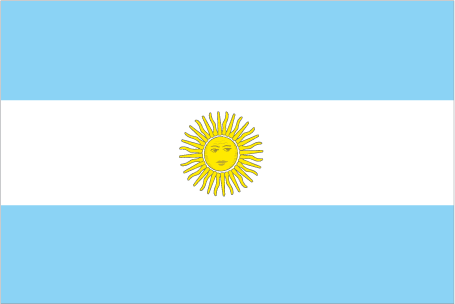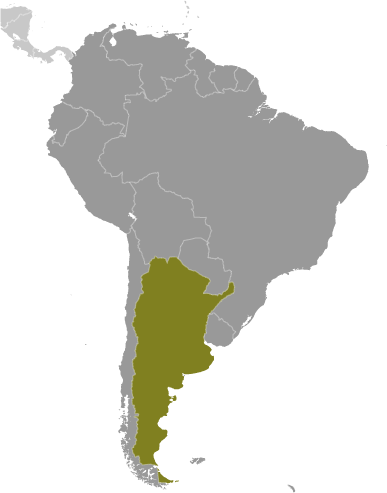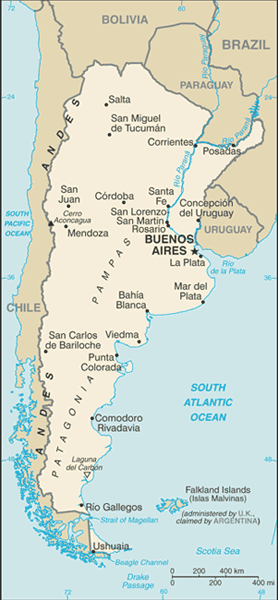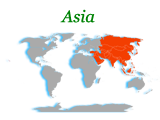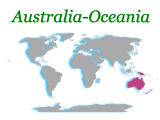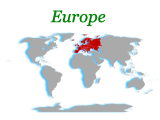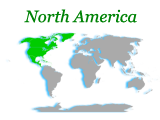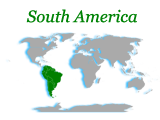In 1816, the United Provinces of the Rio Plata declared their independence from Spain. After Bolivia, Paraguay, and Uruguay went their separate ways, the area that remained became Argentina. The country's population and culture were heavily shaped by immigrants from throughout Europe, but most particularly Italy and Spain, which provided the largest percentage of newcomers from 1860 to 1930. Up until about the mid-20th century, much of Argentina's history was dominated by periods of internal political conflict between Federalists and Unitarians and between civilian and military factions. After World War II, an era of Peronist populism and direct and indirect military interference in subsequent governments was followed by a military junta that took power in 1976. Democracy returned in 1983 after a failed bid to seize the Falkland (Malvinas) Islands by force, and has persisted despite numerous challenges, the most formidable of which was a severe economic crisis in 2001-02 that led to violent public protests and the successive resignations of several presidents.
Country Name
Conventional long form:Argentine Republic
Conventional short form:Argentina
Local long form:Republica Argentina
Local short form:Argentina
Government Type
republic
Capital
Name:Buenos Aires
Geographic coordinates:34 36 S, 58 40 W
Time difference:UTC-3 (3 hours ahead of Washington, DC during Standard Time)
daylight saving time: none scheduled for 2010
Administrative divisions
23 provinces (provincias, singular - provincia) and 1 autonomous city* (distrito federal); Buenos Aires, Buenos Aires Capital Federal*, Catamarca, Chaco, Chubut, Cordoba, Corrientes, Entre Rios, Formosa, Jujuy, La Pampa, La Rioja, Mendoza, Misiones, Neuquen, Rio Negro, Salta, San Juan, San Luis, Santa Cruz, Santa Fe, Santiago del Estero, Tierra del Fuego - Antartida e Islas del Atlantico Sur, Tucuman
note: the US does not recognize any claims to Antarctica
Independence
9 July 1816 (from Spain)
National Holiday
Revolution Day, 25 May (1810)
Constitution
1 May 1853; amended many times starting in 1860
Legal system
mixture of US and West European legal systems; has not accepted compulsory ICJ jurisdiction
Suffrage
18 years of age; universal and compulsory
Executive branch
Chief of state: President Cristina FERNANDEZ DE KIRCHNER (since 10 December 2007); Vice President Julio COBOS (since 10 December 2007); note - the president is both the chief of state and head of government
Head of government:President Cristina FERNANDEZ DE KIRCHNER (since 10 December 2007); Vice President Julio COBOS (since 10 December 2007)
Cabinet:Cabinet appointed by the president
(For more information visit the World Leaders website)
Elections:president and vice president elected on the same ticket by popular vote for four-year terms (eligible for a second term); election last held on 28 October 2007 (next election to be held in 2011)
Election results:Cristina FERNANDEZ DE KIRCHNER elected president; percent of vote - Cristina FERNANDEZ DE KIRCHNER 45%, Elisa CARRIO 23%, Roberto LAVAGNA 17%, Alberto Rodriguez SAA 8%
Legislative branch
bicameral National Congress or Congreso Nacional consists of the Senate (72 seats; members are elected by direct vote; presently one-third of the members elected every two years to serve six-year terms) and the Chamber of Deputies (257 seats; members are elected by direct vote; one-half of the members elected every two years to serve four-year terms)
Elections:Senate - last held on 28 June 2009 (next to be held in 2011); Chamber of Deputies - last held on 28 June 2009 (next to be held in 2011)
Election results:Senate - percent of vote by bloc or party - NA; seats by bloc or party - FpV 8, ACyS 14, PJ disidente 2; Chamber of Deputies - percent of vote by bloc or party - NA; seats by bloc or party - FpV 45, ACyS 42, PRO 20, PJ disidente 12, other 8; note - as of 13 January 2009, the composition of the entire legislature is as follows: Senate - seats by bloc or party - FpV 36, ACyS 23, PJ disidente 9, other 4; Chamber of Deputies - seats by bloc or party - FpV 113, ACyS 77, PRO 26, PJ disidente 17, other 24
Judicial branch
Supreme Court or Corte Suprema (the Supreme Court judges are appointed by the president with approval of the Senate)
note: the Supreme Court has seven judges; the Argentine Congress in 2006 passed a bill to gradually reduce the number of Supreme Court judges to five
Political Parties and Leaders
Civic and Social Accord or ACyS (a broad center-left alliance-including the CC, UCR, and Socialist parties-created ahead of the 2009 legislative elections); Civic Coalition or CC (a broad coalition loosely affiliated with Elisa CARRIO); Dissident Peronists or PJ Disidente (a sector of the Justicialist Party opposed to the Kirchners); Front for Victory or FpV (a broad coalition, including elements of the UCR and numerous provincial parties) [Nestor KIRCHNER]; Interbloque Federal or IF (a broad coalition of approximately 12 parties including PRO); Justicialist Party or PJ [Nestor KIRCHNER]; Radical Civic Union or UCR [Ernesto SANZ]; Republican Proposal or PRO [Mauricio MACRI] (including Federal Recreate Movement or RECREAR [Esteban BULLRICH]; Socialist Party or PS [Ruben GIUSTINIANI]; Union For All [Patricia BULLRICH] (associated with the Civic Coalition); numerous provincial parties
Political pressure groups and leaders
Argentine Association of Pharmaceutical Labs (CILFA); Argentine Industrial Union (manufacturers' association); Argentine Rural Confederation or CRA (small to medium landowners' association); Argentine Rural Society (large landowners' association); Central of Argentine Workers or CTA (a radical union for employed and unemployed workers); General Confederation of Labor or CGT (Peronist-leaning umbrella labor organization); White and Blue CGT (dissident CGT labor confederation); Roman Catholic Church
other: business organizations; Peronist-dominated labor movement; Piquetero groups (popular protest organizations that can be either pro or anti-government); students
International organization participation
AfDB (nonregional member), Australia Group, BCIE, BIS, CAN (associate), FAO, FATF, G-15, G-20, G-24, G-77, IADB, IAEA, IBRD, ICAO, ICC, ICCt, ICRM, IDA, IFAD, IFC, IFRCS, IHO, ILO, IMF, IMO, IMSO, Interpol, IOC, IOM, IPU, ISO, ITSO, ITU, ITUC, LAES, LAIA, Mercosur, MIGA, MINURSO, MINUSTAH, NSG, OAS, OPANAL, OPCW, Paris Club (associate), PCA, RG, SICA (observer), UN, UNASUR, UNCTAD, UNESCO, UNFICYP, UNHCR, UNIDO, Union Latina (observer), UNTSO, UNWTO, UPU, WCO, WFTU, WHO, WIPO, WMO, WTO, ZC
Diplomatic representation in the US
Chief of mission:Ambassador Hector Marcos TIMERMAN
Chancery: 1600 New Hampshire Avenue NW, Washington, DC 20009
Telephone:[1] (202) 238-6400
FAX: [1] (202) 332-3171
Consulate(s) general: Atlanta, Chicago, Houston, Los Angeles, Miami, New York
Diplomatic representation from the US
Chief of mission:Ambassador Vilma MARTINEZ
Embassy: Avenida Colombia 4300, C1425GMN Buenos Aires
Mailing address:international mail: use embassy street address; APO address: US Embassy Buenos Aires, Unit 4334, APO AA 34034
Telephone:[54] (11) 5777-4533
FAX: [54] (11) 5777-4240
Flag description
three equal horizontal bands of light blue (top), white, and light blue; centered in the white band is a radiant yellow sun with a human face known as the Sun of May; the colors represent the clear skies and snow of the Andes; the sun symbol commemorates the appearance of the sun through cloudy skies on 25 May 1810 during the first mass demonstration in favor of independence; the sun features are those of Inti, the Inca god of the sun
